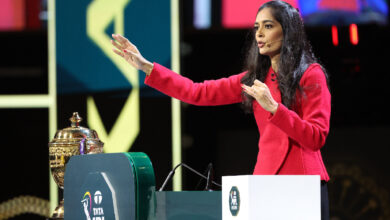Jonny Bairstow and Ishan Kishan point to trend of wicketkeepers being selected more for the runs they score

In the English summer of 1990 when Kiran More dropped a regulation catch of Graham Gooch at Lord’s, the England skipper made the visitors pay going on to score 333. That was one of the famous instances when a wicketkeeper’s make cost the side badly.
However, despite the dropped catch, More was a decent gloveman and belonged to a generation of ’keepers whose ability with the big gloves came before their batting prowess.
“Back in the 80s and 90s, the term was wicketkeeper-batsman, someone who was excellent behind the wickets and could bat a bit. Jeff Dujon, Rodney Marsh, Jack Russell, Alan Knott, Wasim Bari, Syed Kirmani,” recalls former Pakan wicketkeeper Rashid Latif to The Indian Express.
However, as the game evolved, teams have preferred ’keepers who can bat well. In recent times, the trend has got to an extent that batsmen who can keep are being picked for red-ball cricket. “Instead of calling it wicketkeeper-batsman, the term should be batsman-wicketkeeper,” Latif said.
Quest for the next Gilchr
The Australian legend is arguably the greatest ’keeper-batsman Test cricket has ever seen. He was tidy behind the stumps and a prolific run-scorer with the bat. Coming in at seven, he could take the game away from the opposition in a single session. He was one of the major pillars on which the foundation of the success of that great Australian side was built.
But since his retirement, Australia couldn’t find anyone like him but sides that suffered at his hands started to search for a similar player.
Scoring 5,570 runs at an average of 47.6 from 96 Tests which Gilchr did is a difficult task for top-order batters. Players like Kumar Sangakkara, Brendon McCullum and AB de Villiers, who were prolific with the bat and kept in white-ball formats, were reluctant to keep in Tests in order to concentrate more on their batting. Managing both ’keeping and batting at a high level is a demanding task for any player. South Africa’s former Test ’keeper Quinton de Kock and Rishabh Pant have reached Gilchr-like standards, but the sample size is too small to make any judgment.
Makeshift ’keepers
In the ongoing Ashes, England have decided to go with Jonny Bairstow on the argument that he is a better batsman than Ben Foakes. “Foakes is the best wicketkeeper in the world. He has played only 20 Tests. Jonny Bairstow is nowhere close to Foakes. Bairstow will keep dropping catches, but Foakes will not get a chance,” Latif said.
Bairstow has dropped regulations catches and missed simple stumpings in the series so far but England has decided to pers with him for the fourth Test at Old Trafford. The errors behind the stumps may have even influenced the outcomes of games.
Bairstow was magnificent with the bat last year and is the poster boy of Bazball. He scored 1,061 runs at an average of 66.31, but was not keeping wickets then. Foakes was the designated ’keeper at the time but due to developments like the arrival of Harry Brook, he found himself out of the team.
Bairstow’s average drops to 36.43 when he keeps and it has been 23.50 this Ashes series. It has been evident thus far that he has been finding it hard to handle both responsibilities.
India too seems to have taken a similar route in the first Test against West Indies handing a debut to Ishan Kishan. The 25-year-old hardly does any glovework in domestic cricket but is a more attacking option with the bat than KS Bharat. The latter looked technically sound keeping in English conditions in the World Test Championship (WTC) final and was efficient at home against Australia on rank turners, but his batting did not come through. He got a few starts but threw his wicket away.
Kishan is a better batsman who provides the counterpunch the team needs, but the question remains if he is good enough behind the stumps.
Against a weak batting line-up like the West Indies, his ’keeping skills may not come under a lot of scrutiny even if he misses a few chances. His proper test will be against South Africa later this year and against England at home. It will also be interesting to see if his ’keeping affects his batting going forward or if he will be able to compartmentalise both aspects of his game or will have a dip in standards like Bairstow?
The irony of it
The Australians themselves have kept away from the search for the next Gilchr. Instead, they have stuck to traditional methods and have found success. Post Gilchr, Australia went back to players who were good ’keepers first.
“Australians know how to run their cricket. You see Ian Healy was there, then came Gilchr, then Brad Haddin, then Alex Carey,” Latif said.
This has borne fruit for them over the years and is working even now as they are the current WTC winners and are 2-1 up in an away series in England.
Carey has been proactive behind the stumps, unlike Bairstow. The controversial stumping at Lord’s is one of those moments that showed his awareness and game sharpness. His work behind the stumps has been top-notch both in England and India earlier this year on rank turners.
“There is a reason they have dominated world cricket. Consency is key. They have a system and they stick to it.” Latif concluded.







